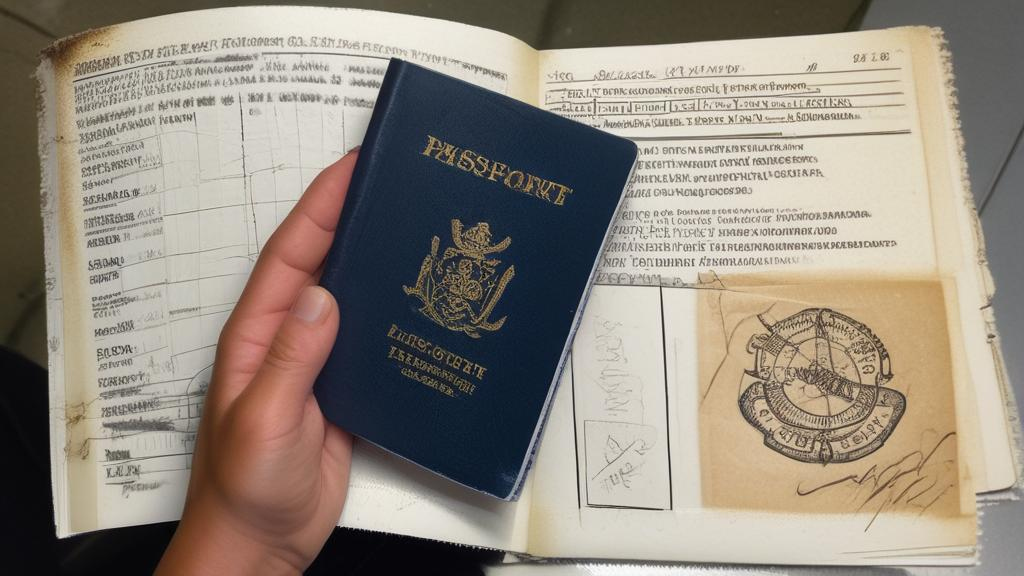Introduction
When it comes to international travel, your passport is your lifeline. It’s the key that unlocks new adventures and experiences around the world. However, passports are not immune to damage, and one of the most common issues travelers face is water damage. In this comprehensive guide, we’ll explore everything you need to know about dealing with a water-damaged passport, from understanding its validity to the steps for replacement.
Are Passports Waterproof?
Passports are essential travel documents, but unfortunately, they are not waterproof. Made primarily of paper pages, passports are susceptible to water damage. When exposed to water, the pages become soggy, and the ink may fade, making the information illegible. It’s crucial to understand that passports should never be submerged in water or subjected to excessive moisture.
Also Read: Repairing Water Damaged Subfloors: A Comprehensive Guide
Is a Water-Damaged Passport Valid?
The validity of a passport is determined by various factors, including its condition, expiration date, and the presence of blank pages. While normal wear and tear are expected, water damage is considered a significant issue. According to immigration laws, a water-damaged passport is not valid for travel or official use. This means that if your passport has been exposed to water, it’s essential to assess the extent of the damage and take appropriate action.
Assessing the Damage
If your passport has come into contact with water, the first step is to assess the damage. Minor exposure, such as a few drops of water, may not render the passport unusable. However, significant water damage, such as blurred or illegible information, peeling pages, or pages sticking together, indicates that the passport is no longer valid.
What to Do with a Water-Damaged Passport
If you find that your passport has been water-damaged, it’s crucial to take immediate action. A water-damaged passport cannot be renewed; it must be replaced. To do this, you’ll need to gather the necessary documents, including the damaged passport, a signed statement explaining how the damage occurred, a complete application form (DS-11), proof of U.S. citizenship, proof of identification, and two passport photos.
Replacing Your Passport
Replacing a water-damaged passport is similar to applying for a new one. You’ll need to submit the required documents in person at a local acceptance agent. The process may vary depending on whether you’re an adult or a minor. Minors must apply in person with their parents or legal guardians and may need to provide additional documentation, such as a notarized letter of consent.
How to Dry a Wet Passport
If your passport has only sustained minor water exposure, you may be able to salvage it. Here are some steps to follow:
- Remove Excess Water: Gently dab the passport with a soft towel to absorb as much water as possible without rubbing the document.
- Air Dry: Lay the passport open on a dry towel in a well-ventilated area away from direct sunlight.
- Use Absorbent Material: Place absorbent paper between each wet page to soak up moisture.
- Pressing: Once the passport pages feel damp instead of wet, close the passport and place it between two heavy books to restore its shape.

However, it’s essential to remember that significant water damage may still require passport replacement, even after drying.
Traveling with a Damaged Passport
Attempting to travel internationally with a water-damaged passport can lead to travel disruptions and complications. Airlines and immigration authorities may refuse to accept a damaged passport, resulting in denied boarding or entry/re-entry to countries. It’s essential to assess the extent of the damage and take appropriate action before traveling with a damaged passport.
Also Read: The Battle Against Mold in Carpet from Water Damage: 6 Steps to Salvage Your Flooring
Conclusion
A water-damaged passport is a significant inconvenience for any traveler. However, by understanding the steps for assessment and replacement, you can navigate the process with ease. Remember to act quickly, gather the necessary documents, and follow the guidelines provided by the passport authorities. By taking proactive measures, you can ensure that your travel plans remain on track, even in the face of unexpected passport damage.
In conclusion, dealing with a water-damaged passport requires prompt action and careful consideration. By following the steps outlined in this guide, you can address the issue effectively and minimize disruptions to your travel plans. Remember, your passport is your ticket to the world – protect it accordingly.










